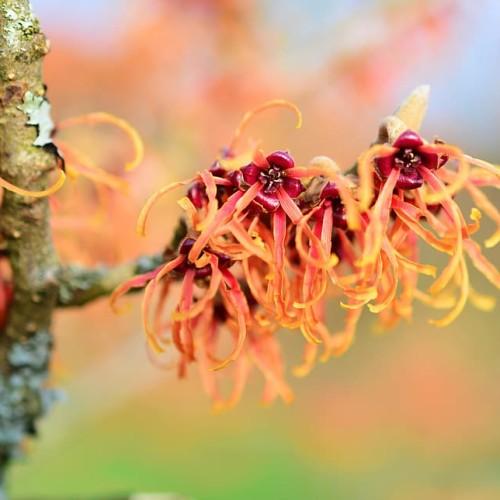
witch hazel
Hamamelis intermedia 'Hiltingbury'
Cycle:
Perennial
Watering:
Average
Hardiness Zone:
5 - 8
Flowers:
Flowers
Sun:
Full sun,part shade
Leaf:
Yes
Growth Rate:
Low
Maintenance:
Low
Drought Tolerant:
Yes
Care Level:
Medium
watering
Witch hazel (Hamamelis intermedia 'Hiltingbury') should be watered about once every 2 weeks or so. For best results, it is important to water deeply during each session, allowing the soil to become evenly moist throughout. If using irrigation, set the system to water the soil slowly over a period of time so that the water has a chance to penetrate the soil. Be sure to water thoroughly, especially in hot, dry weather. When it comes to indoor potted plants, it is best to wait until the top inch or so of soil is dry before watering again.
sunlight
Witch hazel (Hamamelis intermedia 'Hiltingbury') does best in full sun or partial shade. It prefers several hours of morning sunlight and dappled shade in the afternoon, avoiding intense afternoon sun exposure. In cooler regions with 4 distinct seasons, witch hazel needs at least 4 hours of direct sunlight each day in order to flower and produce fruit. In mild winter regions, plants grown in full sun may require a bit of afternoon shade depending on the intensity of the sun.
pruning
Witch hazel (Hamamelis intermedia 'Hiltingbury') should be pruned in late winter or early spring, as soon as the danger of frost is gone. Prune lightly in the first season after planting. Then, during the late winter or early spring of subsequent years, the plant can benefit from further pruning and shaping. Remove dead wood, weak branches, and crossing branches. Also, prune to control the size and shape of the shrub. Long, curved branches can be pruned back to encourage a denser, more compact form. Remove no more than 1-third of the living branches during pruning and focus on shaping the plant. If needing to reduce the size of the shrub, shorten the side shoots growing from the main stems. Branches can also be cut back just above a leaf bud.
